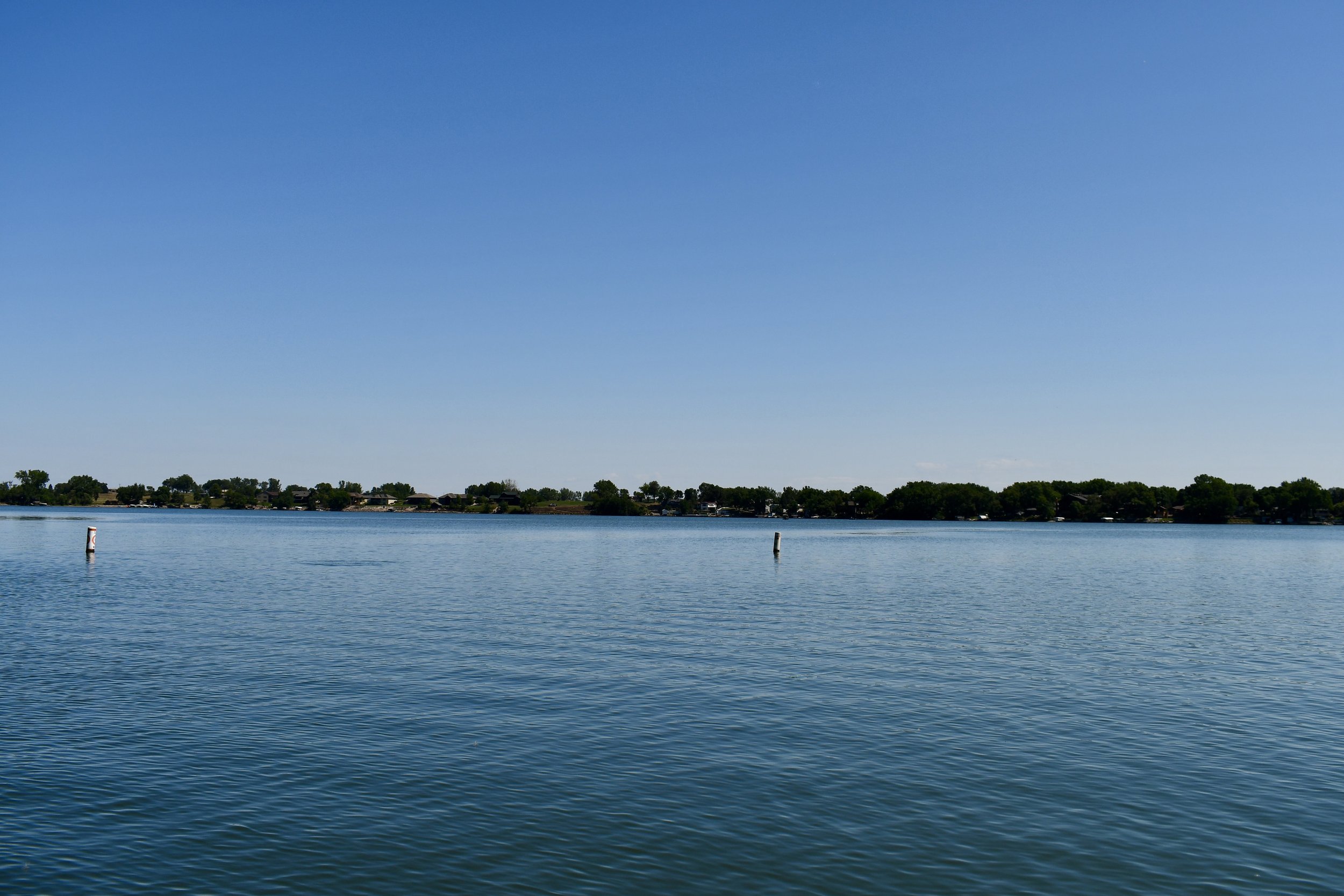What the Watershed Means to Me: Wall Lake
Wall Lake, July 2022
This article was written by a Jefferson High School student in Melissa Hittner’s 2023-2024 AP Environmental Science class and edited by Friends of the Big Sioux River staff.
When I was young, my family and I would go to Wall Lake on hot summer days. We would swim in the cool water as clouds in the bright, blue sky passed us by. Every day in the summer, I wished to be back at the lake, enjoying nature, fishing, and being with my family. However, since then, the water quality of the lake has greatly decreased, and I can no longer enjoy the lake the same way I did in my childhood.
Wall Lake is one of the many glacial lakes in the Big Sioux watershed, located about 14 miles west of Sioux Falls, South Dakota. The lake provides habitat for fish and other aquatic organisms and adds aesthetic beauty to the area. It is a popular area for swimming, boating, fishing, and birding. Water enters the lake through precipitation, runoff, groundwater seepage, and intermittent streamflow from the north, northwest, and west. In the early 1990s, the Wall Lake Restoration Project removed 1.5 million cubic yards of sediment from the lake bottom. A wetland was created directly west of the lake to act as a buffer from future sedimentation. Today, this wetland area is known as the Dewey C. Gevik Outdoor Learning Conservation Area.
According to The 2018 South Dakota Integrated Report for Surface Water Quality Assessment, Wall Lake met the parameters for swimming and fishing. However, data in the 2024 Integrated Report show that the lake no longer meets the standards for swimming due to a lack of dissolved oxygen. Wall Lake is a hypereutrophic lake, containing a high amount of nutrients that lead to the excess growth of algae and other plants. This excess growth deprives aquatic organisms of nutrients, sunlight, and oxygen, which can cause health issues and, ultimately, death.
Wall Lake, September 2023
The death of fish, plants, and invertebrates from the increased algae blooms often leads to more algae blooms. As more organisms die because of the lack of oxygen, nutrients, and sunlight, decomposing bacteria multiply. These decomposers use oxygen from the water for cellular respiration, which other aquatic organisms need to survive. As oxygen levels deplete, more aquatic organisms die, thus creating a perpetual cycle of algal growth and organism death.
According to the article “What is Nutrient Pollution?” by the National Ocean and Atmospheric Administration, nutrient pollution can come from wastewater treatment facilities and runoff from land in urban and agricultural areas during rainfall events. In South Dakota, one of the primary causes of water pollution is runoff from fertilizers, which come from many different places, making it a non-point source of pollution. Fertilizers work by providing nutrients to plants, such as nitrates and phosphates. When there is a lot of precipitation, some of those nutrients are carried into nearby bodies of water via runoff.
Because one of the primary causes of excess nutrients in the water is fertilizer runoff, the best way to prevent other lakes from becoming eutrophic or hypereutrophic is to prevent fertilizer runoff from entering the body of water in the first place. Decreasing the amount of fertilizers we use limits the number of nutrients that end up in the water, thus slowing down algal blooms and keeping aquatic animals alive. To further decrease the amount of nutrients in the water caused by runoff, a buffer strip could be added around the lake and any places nearby where fertilizer is used. A buffer strip is an area of land where the ground is completely covered in grassy or woody vegetation to help slow the flow of runoff, filter excess nutrients, and decrease the amount of soil erosion. Buffer strips prevent nutrients from getting into the water, thus preventing the further spread of algae and improving the health of the lake. Wall Lake is a valuable asset to our community, and it is our job to continue to protect it!


